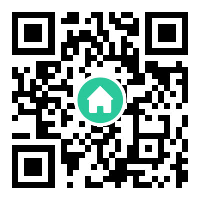In recent years, the integration of artificial intelligence into messaging platforms has revolutionized how users interact with technology. Among these innovations, the Telegram ChatGPT bot stands out as a powerful tool that combines the versatility of Telegram's messaging ecosystem with the advanced capabilities of OpenAI's ChatGPT. This fusion enables users to access real-time AI-driven conversations, task automation, and personalized assistance directly within their favorite messaging app. As more individuals and businesses seek efficient ways to streamline communication and problem-solving, the Telegram ChatGPT bot has emerged as a game-changer, offering a seamless bridge between human needs and machine intelligence.
The Architecture Behind Telegram ChatGPT Bot
The Telegram ChatGPT bot operates through a sophisticated interplay of APIs and machine learning models. Telegram's Bot API serves as the foundation, allowing developers to create interactive bots that respond to user commands. When a user sends a message, the bot relays it to OpenAI's GPT-3.5 or GPT-4 infrastructure via secure API endpoints. The AI processes the input, generates contextually relevant responses, and sends them back to Telegram in milliseconds. This architecture supports multilingual interactions, context retention across conversations, and adaptive learning based on user behavior. By leveraging Telegram's cloud-based infrastructure and ChatGPT's scalable neural networks, the bot maintains high availability even during peak usage periods.
Practical Applications in Daily Life
From students seeking homework help to professionals drafting business emails, the Telegram ChatGPT bot demonstrates remarkable versatility. Language learners practice conversational skills through simulated dialogues, while programmers troubleshoot code errors by pasting snippets directly into chat. Entrepreneurs use the bot for market research analysis, generating SWOT frameworks from simple prompts. Its ability to summarize lengthy articles, create meeting agendas, and even compose poetry makes it indispensable for productivity enthusiasts. Unlike browser-based AI tools, the Telegram integration allows instant access through smartphone notifications, enabling users to harness AI capabilities while commuting or during quick work breaks.
Enhancing Business Operations
Companies increasingly adopt customized versions of the Telegram ChatGPT bot to automate customer support and internal workflows. Retail businesses deploy it for 24/7 product inquiries, handling routine questions about shipping policies or inventory availability. HR departments utilize the bot for onboarding processes, providing new employees with instant answers to frequently asked questions. Advanced implementations feature integration with CRM systems, enabling the bot to retrieve customer purchase histories during support chats. The bot's natural language processing excels at sentiment analysis, alerting managers to frustrated customers in real-time while suggesting de-escalation strategies to human agents.
Privacy and Security Considerations
While the Telegram ChatGPT bot offers unprecedented convenience, its data handling practices warrant careful examination. Telegram's native encryption protects messages in transit, but interactions with OpenAI's servers fall under the AI provider's privacy policy. Users must remain vigilant about sharing sensitive information, as training data retention policies vary between bot implementations. Reputable developers implement data anonymization techniques and periodic chat history purges. Some enterprise-grade solutions offer local AI model deployment, keeping confidential data within private servers. As regulations like GDPR and CCPA evolve, bot developers face increasing pressure to implement granular privacy controls and transparent data usage disclosures.
Future Developments and Ethical Implications
The next generation of Telegram ChatGPT bots will likely incorporate multimodal capabilities, processing voice notes and images alongside text inputs. Advancements in few-shot learning could enable bots to master specialized domains like legal analysis or medical diagnostics through minimal training data. However, these developments raise ethical questions about AI accountability and the potential for misinformation spread. Developers must implement robust content moderation systems to prevent abuse while maintaining the bot's creative potential. As governments worldwide draft AI governance frameworks, the open-source community plays a crucial role in ensuring transparent development practices for Telegram AI bots.
As the digital landscape evolves, the Telegram ChatGPT bot exemplifies how AI can enhance human capabilities without replacing personal interaction. Its continued refinement promises to democratize access to advanced language models while challenging developers to balance innovation with ethical responsibility. From casual users to multinational corporations, this technology redefines what's possible in the realm of instant messaging-powered artificial intelligence.












